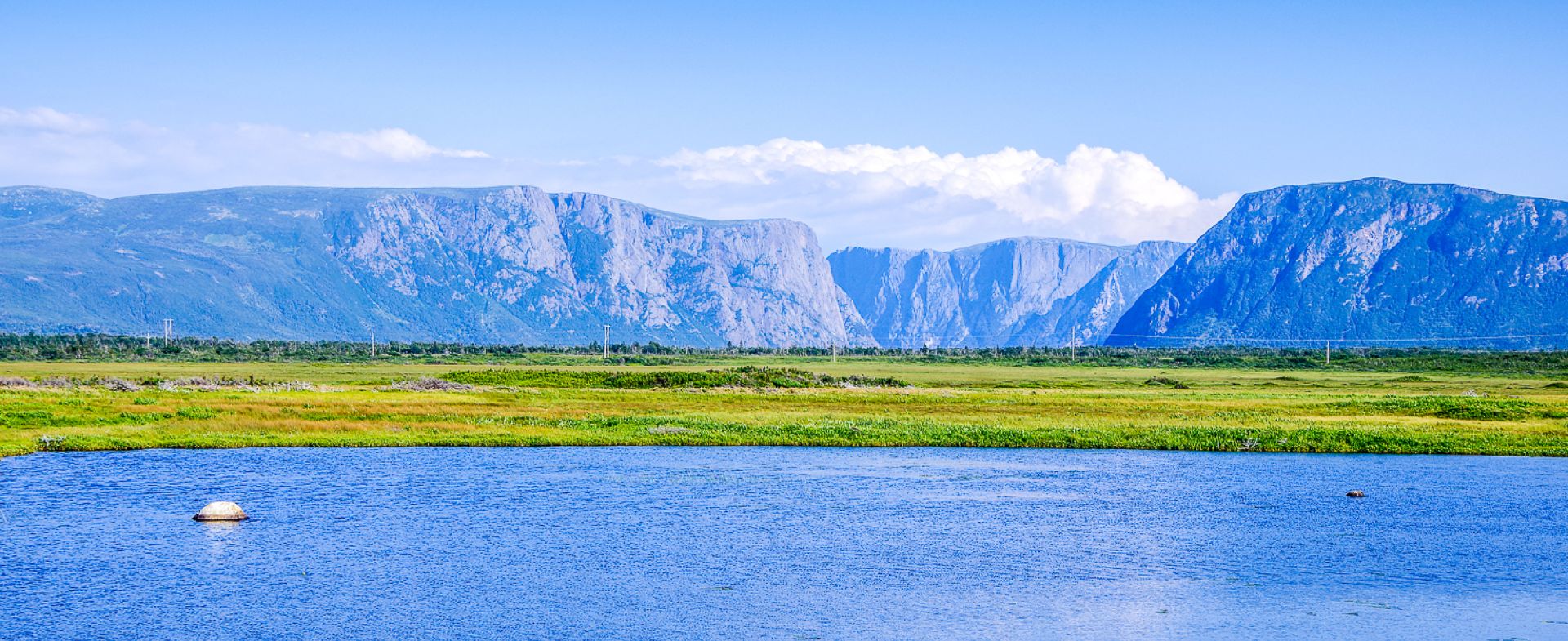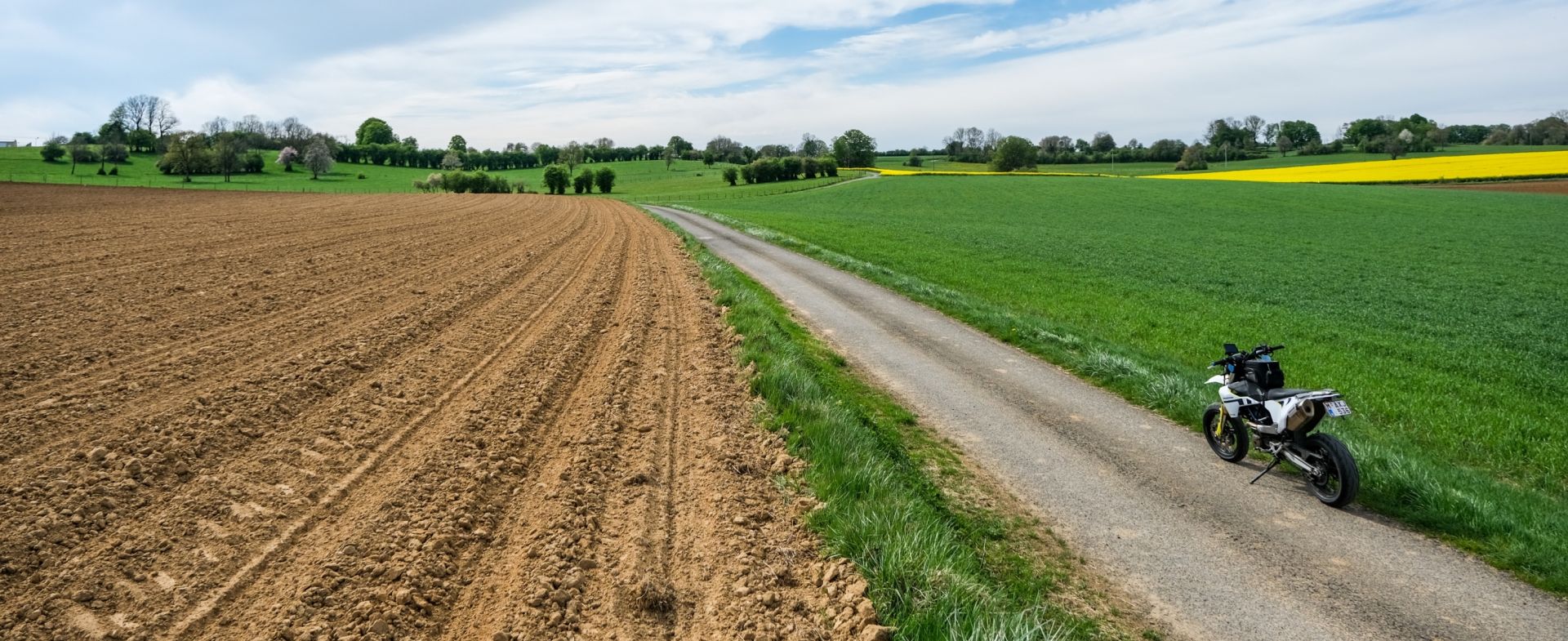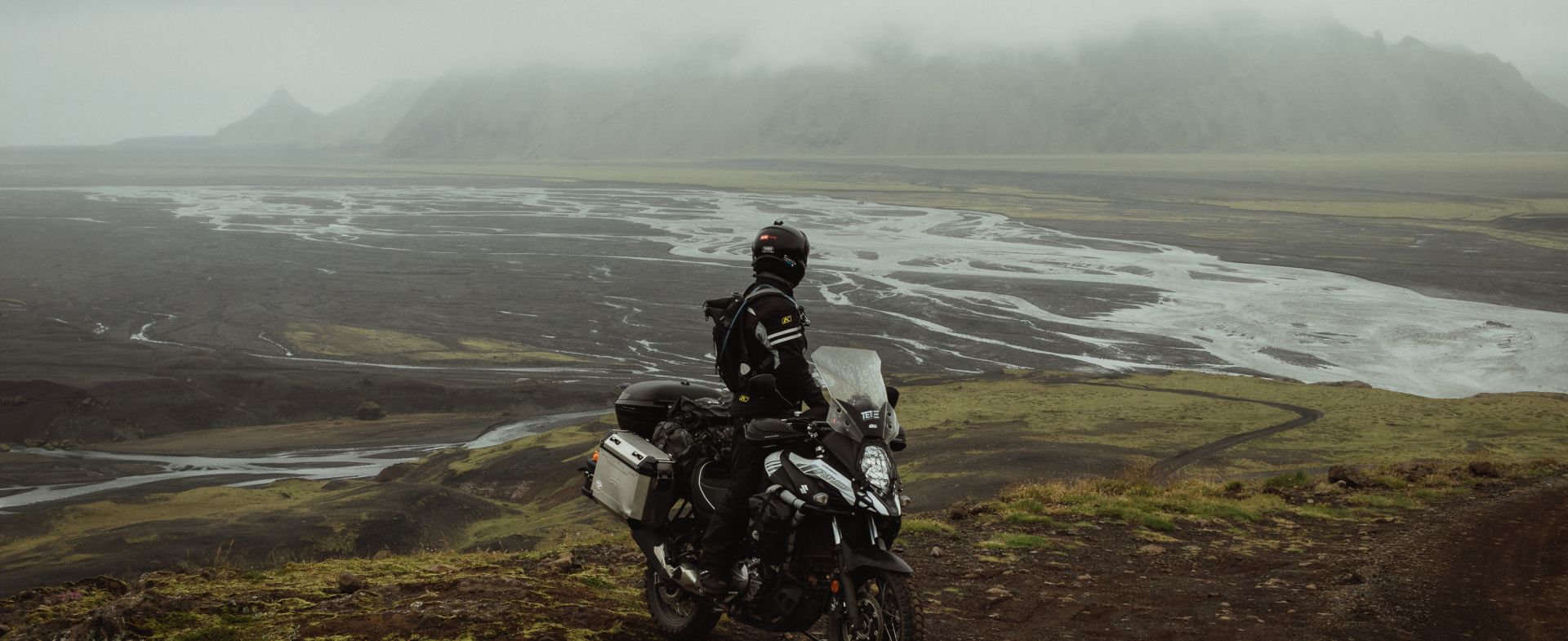RTWPaul: Newfoundland and Labrador
Motorcycle Diaries
Looking over the small fjord, I couldn’t see any icebergs now, as the fall had just descended on Newfoundland island, and the weather had begun to turn. Exploring Newfoundland with the help of Murphy, a friendly local adventure rider, was a blessing: not only he could cook traditional Newfoundland cod tongues, moose sausage, and seal steak like a true islander, but he was full of stories and local legends making my ride across Newfoundland that much more colourful.
Murphy had lived in Newfoundland all his life, hunting moose and seals with his father and visiting small local fishing communities accessible by water only, even to this day. “Newfoundland is a country of its own, in a sense, except we rarely make actual sense. We used to be an independent dominion, but I guess we just couldn’t cope – having a government is just so much hassle! – so in 1949, we voted to join Canada instead”, Murphy laughed. Just like so many other Newfoundlanders, he had an accent that was impossible to understand, a heart of gold, and an unparalleled sense of humour.
Riding Newfoundland
Hospitable locals are one of Newfoundland’s most endearing qualities, especially if you have the time to hang out, ride together, and share a beer or two. Speaking of beers: Newfoundland and Labrador has more pubs per capita than any other location in Canada, so perhaps it’s no wonder the locals love having a drink and a talk.
But while Newfoundland’s beer is legendary (and sometimes, locals claim, made with pure iceberg water), its food isn’t for everyone. The typical fish and chips are great for both lunch and dinner, but when it comes to a local specialty of cod tongues or seal meat, beware: the textures and the smells may not be for you.
In terms of riding, there’s no shortage of off-road trails in Newfoundland, and the island is where the Trans Canada Trail begins. Having arrived in Newfoundland on the Channel-Port aux Basques ferry, I headed East following the tracks around the Grand Lake and leading towards Grand Falls-Windsor, Gander, and finally, St. John’s. The riding in Newfoundland is spectacular because it’s so remote, and you can often spot moose and other wildlife as you travel. Be careful with speeds, however, as moose can appear out of nowhere.
Another big draw of Newfoundland is its icebergs which you can see floating just off the coast. The best time to see the bergs is between May and July (the same goes for whales which you can spot along the Northern coast of Newfoundland), but you may get lucky and catch a glimpse of one as late as mid-August. For more accurate information on viewing icebergs, check with the Canadian Ice Service, and if you’d like to see an iceberg up-close, there are boat tours available on the island.
Trans-Labrador Highway
After exploring Newfoundland on two wheels, it was time to head West and aim for the Trans-Labrador highway, often called “the loneliest road in North America”. To get to Labrador, I hopped on the Saint Barbe – Blanc Sablon ferry and began my journey towards Labrador City.
If you’re doing the Trans Labrador Highway East to West, make sure to stock up on supplies in Blanc Sablon. Looking like a fur trading post of the old days, Blanc Sablon has a large supermarket where you’ll find plenty of canned food options, camping stove gas supplies, and so on. If you don’t already carry a mosquito repellent and mask, get those in Blanc Sablon, too: black flies and mosquitoes are relentless here, and you’ll need some serious protection, especially if you’re planning to camp the whole way.
The Trans-Labrador Highway is roughly 1,200 km long and, while most of it is now paved, you still have an unpaved section left between Port Hope Simpson and Happy Valley-Goose Bay. Bear in mind that there are 251 miles between Port Hope Simpson and Happy Valley-Goose Bay, and then another 178 to Churchill Falls so make sure you have enough fuel range for those distances. If you don’t, get a jerry can and fill it up just in case: if there was one word to describe Labrador most accurately, it would be “remote”, followed closely by “isolated” and “inaccessible”. The Trans-Labrador Highway is the only road connecting Blanc Sablon and Labrador City, and in between lies a whole lot of nothing.
Thick primeval forest, rocky rivers, and northern marshes is all you will see for hundreds and hundreds of miles, and there will be no towns, villages, or even indigenous settlements in between. On the Trans-Lab, you’re on your own. There will be some traffic on the road, mostly trucks carrying hydroelectric dam equipment, and a lone 4x4 here and there, but for the most part, this road is completely empty.
That, however, is the beauty of it. For days on end, you can get lost in your own mind, covering a lonely mile after a lonely mile. You can stay the night in happy Valley-Goose Bay, as there are some campsites and accommodation options available; in Churchill Falls, a small workers’ settlement, there’s an overpriced hotel you can use. After that, your best bet is making for Labrador City, unless you want to explore some of the off-road trails shooting off the Trans-Lab. Make sure you’ve got plenty of fuel range and bear spray if you do, however: out there in the wilderness, things can take the wrong turn quicker then you can say “moose”.
The best time of year to cover Newfoundland and Labrador is May to end of August, as the weather will be mild and you may spot whales and icebergs along the way. Past mid-September, the weather turns, so pack your rain gear and prepare to battle the elements if you’re late in the season.
Whichever month of the year you choose, however, make sure you do it soon. The Trans-Lab will soon be a paved highway, and while Newfoundland will likely remain a wild island with charming little fishing villages and communities reminding those of the Norwegian Lofoten islands, the times are changing, and the best window to go there is now.




























